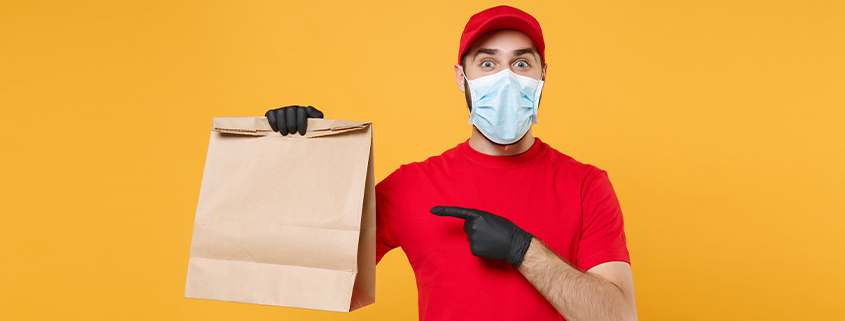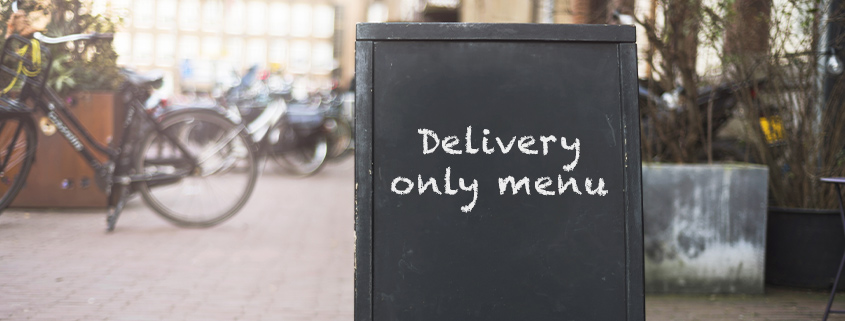State Governments all over the country are taking bold but necessary measures to slow down the spreading of the coronavirus. One of those actions is to close down the dine-in service of restaurants (or to discourage people from visiting food businesses).
Many restaurateurs are not letting this dampen their spirit and are making the best out of the situation by turning their businesses into delivery-only operations.
Due to the nationwide lockdown followed by the various unlock phases, many foodservice businesses already have a well-thought-out delivery and takeout channel in place.

If that’s not you, then you probably have a lot of queries.
Here is a compiled checklist on how to switch a dine-in restaurant into a delivery business.
1. Create Order Channel
On a typical day, a customer would walk into your restaurant with the intent of dining. But your customer is no longer out and about right now. Instead, they are spending most of their time online.
The most important way of establishing your online presence, business, and increasing orders is getting your own ordering platform, a website. This ordering platform, made possible by inresto for many of its partners, lets their customers navigate through the menu and place direct orders.
Many restaurants partner with 3rd party aggregators for doorstep delivery, but that also means lesser profit margins. Should you decide to organize the deliveries yourself, then consider tasking your existing staff who is no longer waiting tables to deliver the orders.
Also Read: How to run a food delivery business during the pandemic
2. Go buzz on Social Media & SMS

You have to be where your customers are. If they were at a marketplace, you would hand out flyers. But now, your customers are on social media. So your flyer becomes posts, stories, polls, videos on social media. With a very high engagement rate, these platforms guarantee traffic to your website that can easily translate into business.
What can you share? Breathtaking shots of your menu items, Any special offers lie BOGO to get them to act on their cravings and give in to the temptation of good food.
While that is communicating with the mass, a more personal and customized approach is through SMS. You can reuse your existing database of customers and launch various campaigns made possible by inresto Campaigns. This will help you reconnect with your loyal customers and retain them.
3. Curate your menu

Making your in-dining menu available for delivery is a recipe for disaster. And you know that. Not every food item is travel-friendly, even with the most sturdy packaging material. So, create a customized delivery/ takeaway menu that has selected best-selling items from your original menu and some exciting new dishes.
Additionally, these item’s prep & cooking time should be under 30 mins. You can also select recipes that you can prep in bulk and cook over the day as and when orders pour in. This way you can take more orders and make quick deliveries.
The final touchpoint is the cost factor. Since your customers are ordering from home and do not experience your in-dining hospitality, they would expect to pay a tad bit less. Therefore, to encourage more incoming orders, optimize each meal’s ingredients and portion size to keep the price low.
Also Read: How to refurbish your Menu for Delivery services
4. Package like a Pro
The first experience of opening a food package should never be a cold mess. It ruins the experience even before anyone takes their first bite. In order to avoid such unsavory situations, proper and separate packaging of items is necessary.
One can choose from a variety of options below –
- Styrofoam – good insulator; it helps to control the temperature of food. Though environmentally not friendly, this can help your orders travel well.
- Plastics containers – A much cheaper option, this comes in varied sizes and shapes. These are perfect for protecting your meals, but their position on the eco-friendly scale also is far below zero.
- Cardboard – A more biodegradable option, this is cost-effective and sturdy. However, if your food travels long distances, then it might make it soggy due to moisture.
- Sustainable packaging – A tad bit costly affair but proves better for the environment. This also helps build a better brand image and gives your food an instant premium look.
So, now that all the key points are covered, what’s stopping you from transitioning into a delivery model? The ingredients for disruption are all here.

